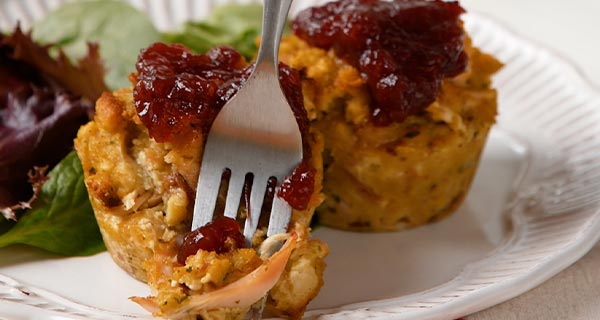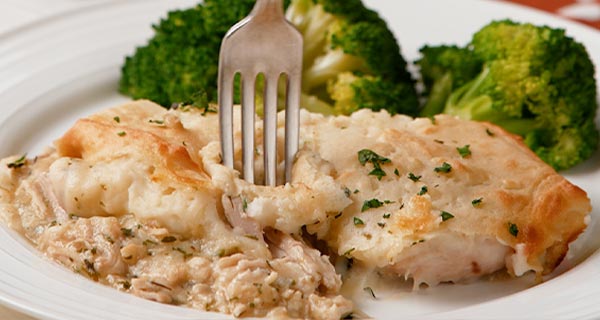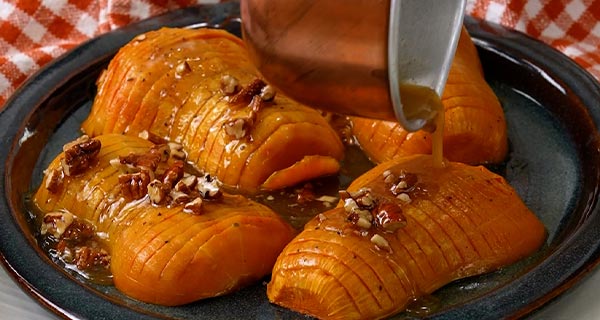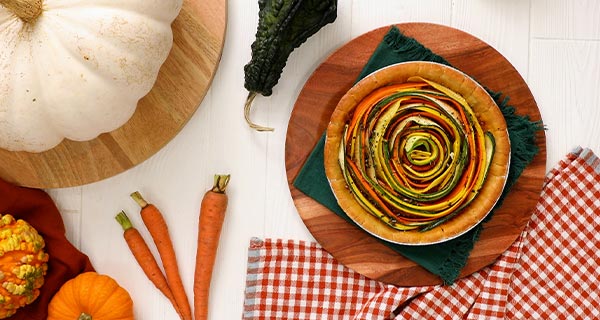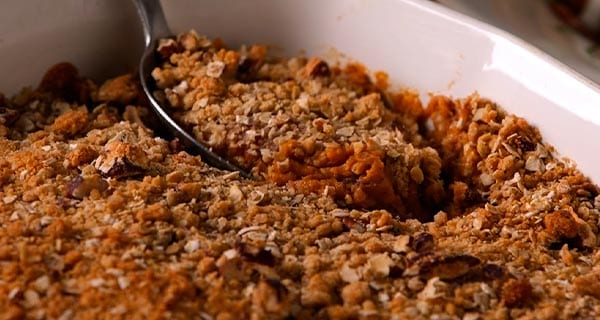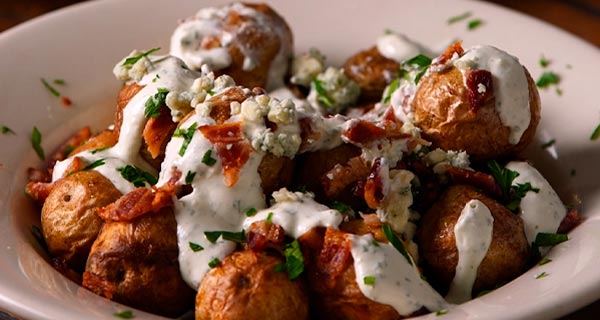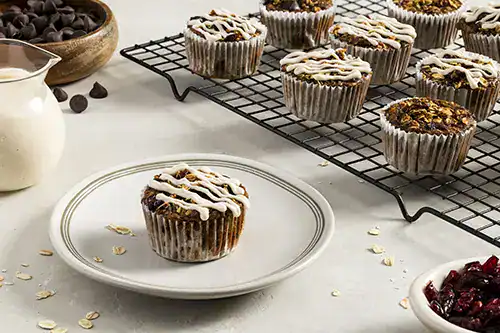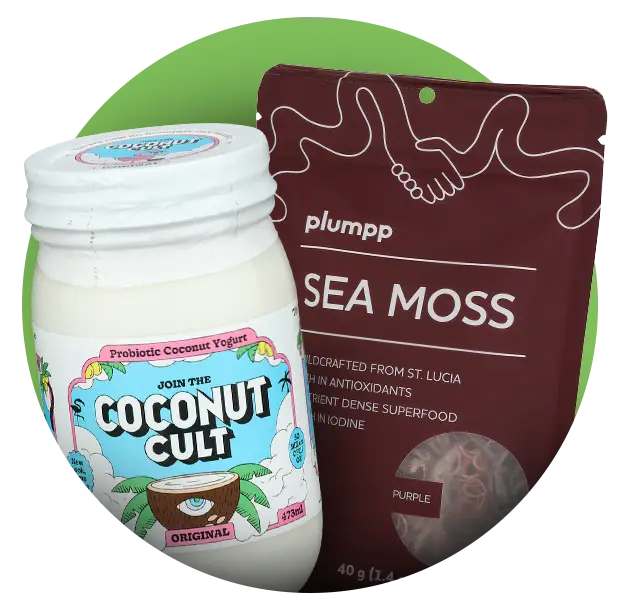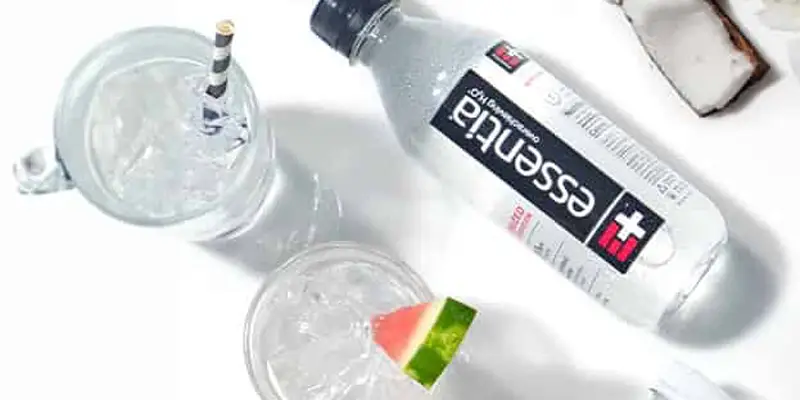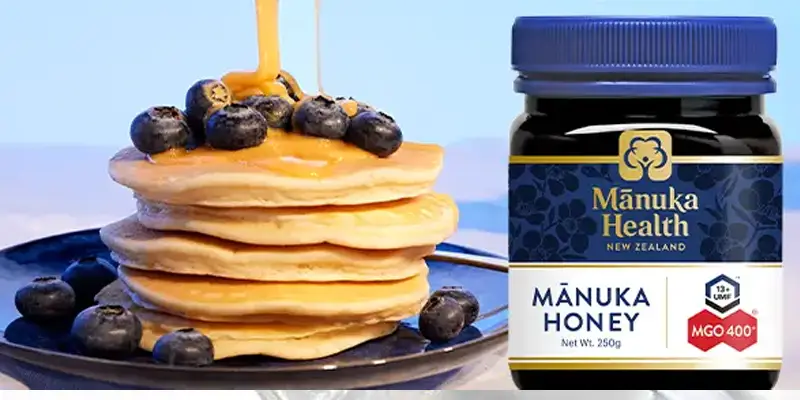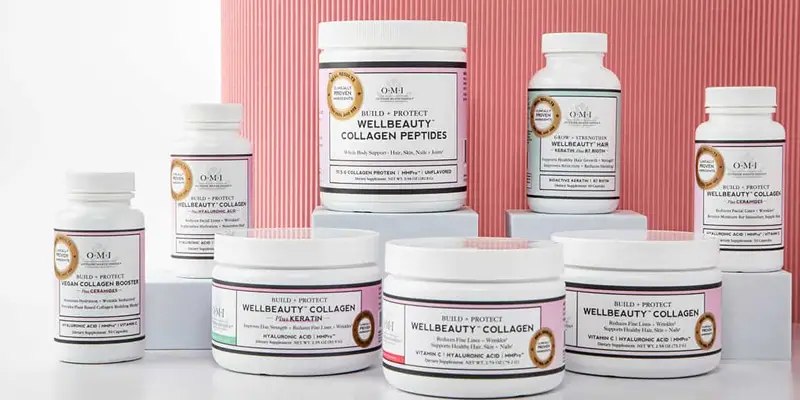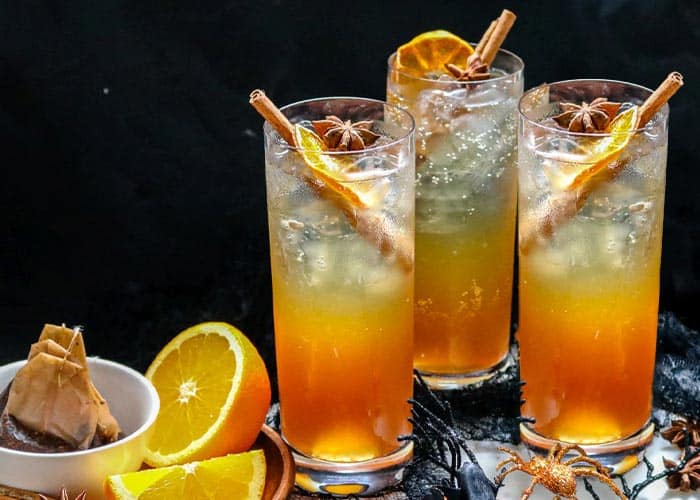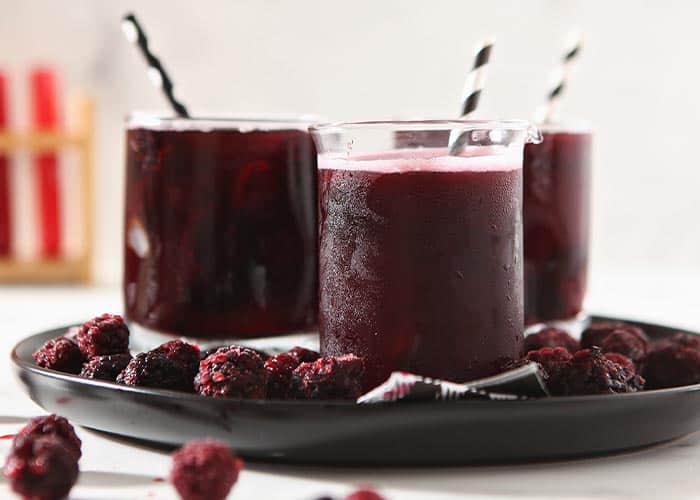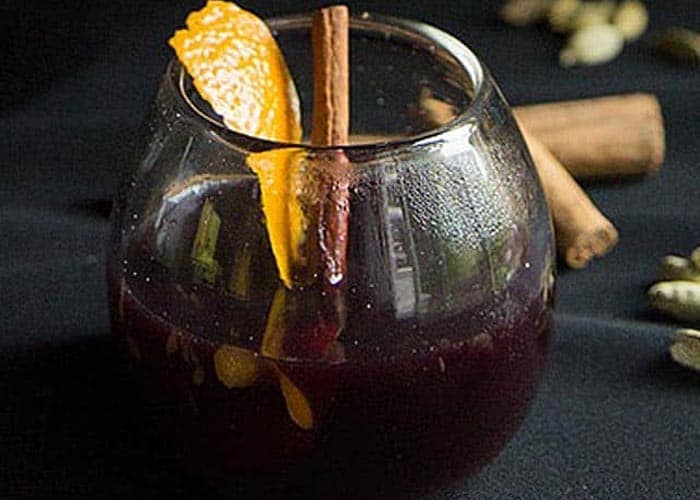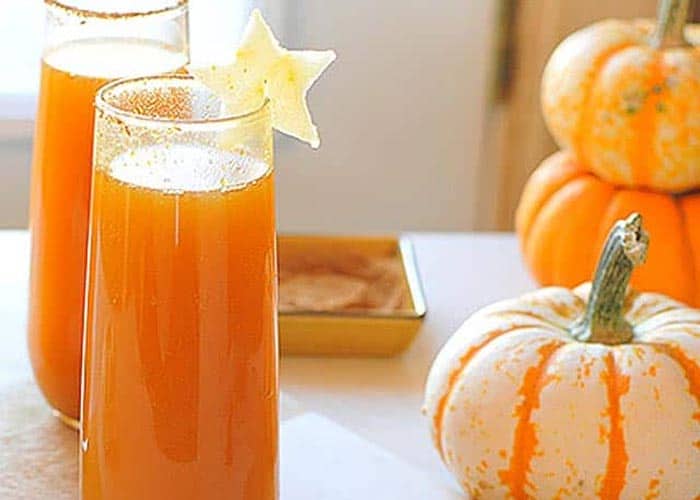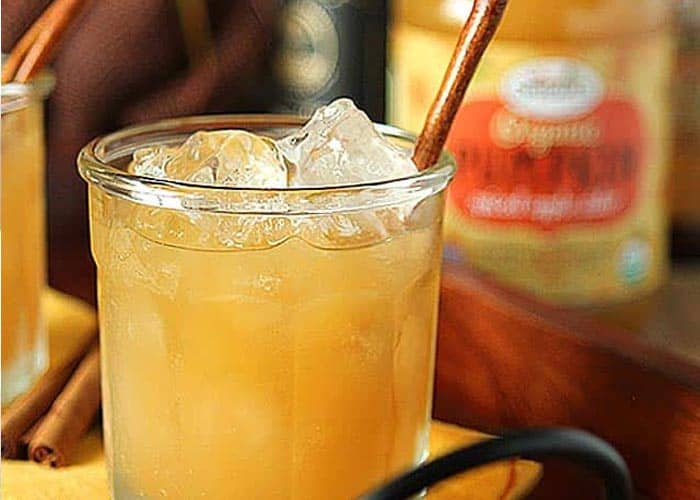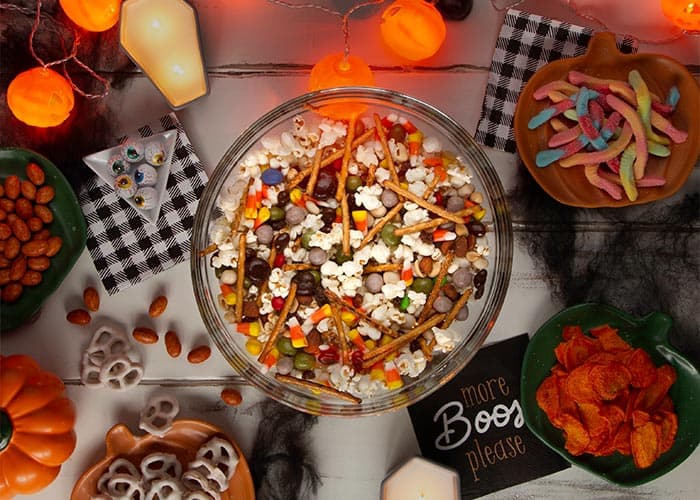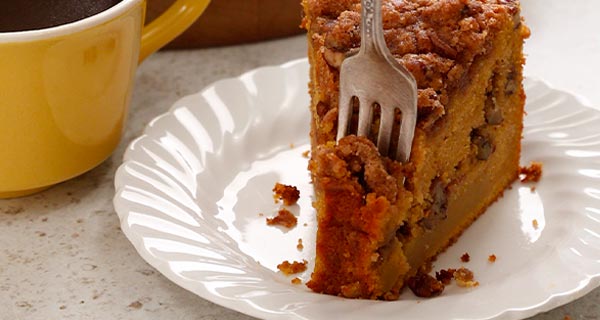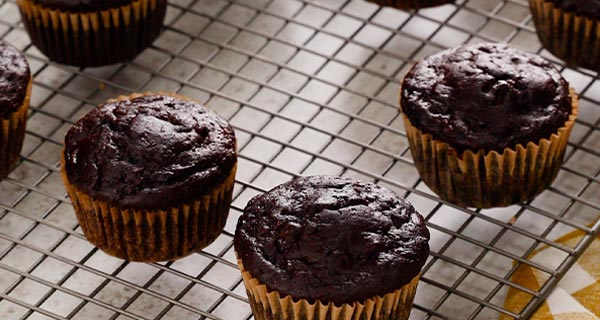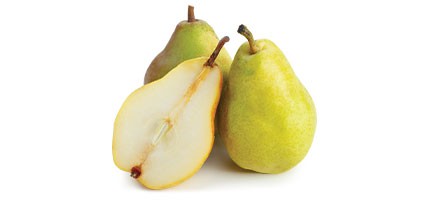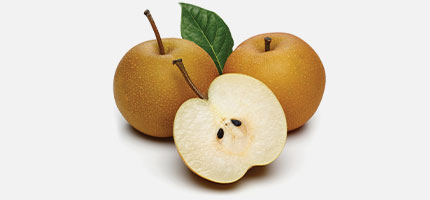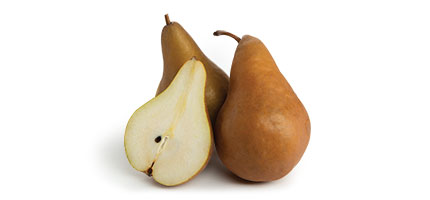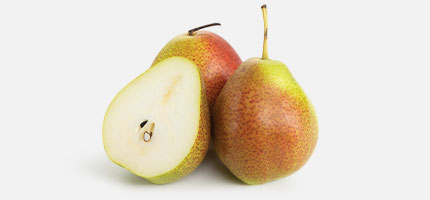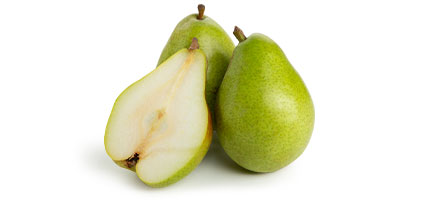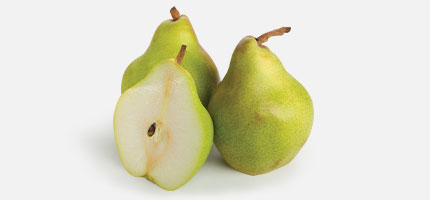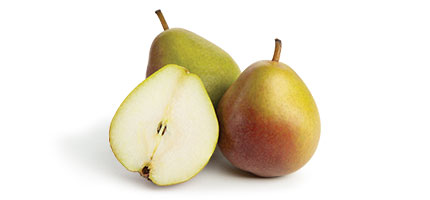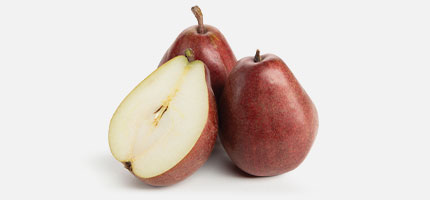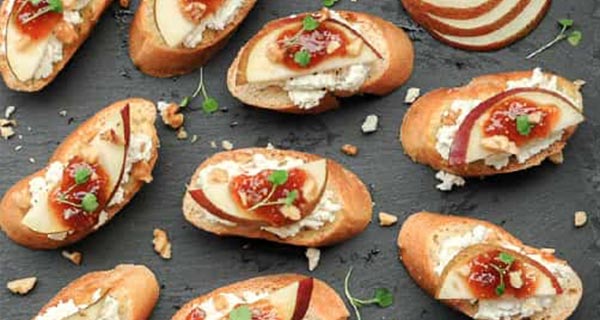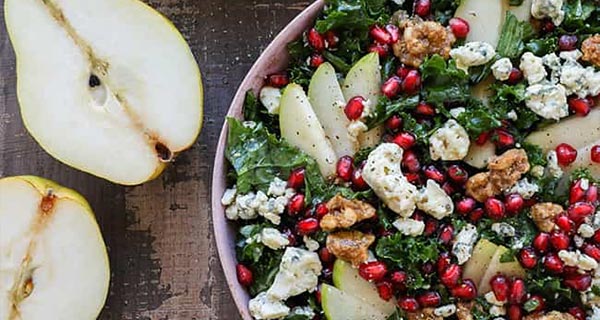
Chai-Spiced Gingerbread Cookie Trees
These cookies blend the warm festive flavors of chai and gingerbread to create an unforgettable holiday bite, and they’re just as delicious gluten-free!
Recipe by Liz Clements for Bob’s Red Mill Natural Foods
Makes: 3–4 trees, about 36 cookies
Prep Time: 20 minutes
Cook Time: 10–12 minutes
Passive Time: 50–80 minutes
Chai Spice Mix
- 2 Tbsp ground Cinnamon
- 2 Tbsp ground Cardamom
- 2 Tbsp ground Ginger
- 1 tsp ground Nutmeg
- 1/2 tsp ground Cloves
- 1/8 tsp finely ground Black Pepper
Gingerbread Cookie Dough
- 6 cups Bob’s Red Mill® Organic Unbleached White All-Purpose Flour or Gluten Free 1-to-1 Baking Flour
- 1 tsp Baking Soda
- 1/2 tsp Baking Powder
- 2 Tbsp Chai Spice (from above)
- 1 cup Unsalted Butter, room temperature (2 sticks)
- 2 cups Light Brown Sugar, packed
- 2 tsp Salt
- 2 Eggs
- 1 cup Molasses
Royal Icing
- 2 large Egg Whites
- 4 cups Powdered Sugar, sifted
Chai Spice Mix
- Combine all spices in a small bowl and transfer to a jar for storage. Use 2 tablespoons for the cookies; reserve the remainder for another use.
Gingerbread Cookie Dough
- In a medium bowl, whisk together flour, baking powder, baking soda and 2 tablespoons chai spice. Set aside.
- In a large bowl, cream together butter, brown sugar and salt until light and fluffy. Beat in eggs one at a time, scraping the bowl as needed.
- Mix in molasses until incorporated. Gradually add the dry ingredients and mix until dough forms.
- Divide dough into three equal portions. Roll each between two sheets of parchment paper to ⅛–¼ inch thick. Chill until firm, 30–60 minutes.
- For each tree, plan for about 9 cookies: 1–2 large base cookies, 4–5 medium middle cookies, and 2–3 small top cookies.
- Cut out the largest pieces first to form the tree bases, leaving more room in the dough for medium and small shapes. Cut out medium and small shapes next, using more medium and small pieces than large pieces to build height.
- Carefully lift cutouts and place on parchment-lined baking sheets. Re-roll any trim dough and repeat until you have enough pieces.
- Chill cut cookies again for at least 20 minutes to keep their shape.
- Preheat oven to 350°F.
- Arrange smaller shapes together on one tray and larger shapes on another, leaving at least ½ inch between cookies.
- Bake 10–12 minutes, until edges are very lightly browned, noting that larger cookies may need slightly longer.
- Allow cookies to cool completely on a wire rack before decorating.
Royal Icing
- In a large bowl, whisk egg whites until slightly frothy. Gradually add sifted powdered sugar, whisking constantly until incorporated.
- Beat 5–7 minutes until smooth and glossy. It should hold stiff peaks.
- Use immediately for decorating, or cover tightly with plastic wrap pressed against the surface to prevent drying.
To Assemble
- Decorate cookies with royal icing as desired and allow the icing to fully dry before stacking.
- Stack cookies to build the trees, using a small dot of royal icing between each layer for added stability. Allow assembled trees to set completely before placing on a platter or centerpiece.
Tips: Use a cookie-cutter set with at least 5 different sizes to give your tree a nice, tapered effect. Rotate cookies slightly as you stack to create a fuller shape.
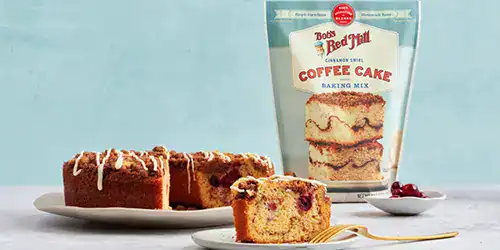
Cranberry Cream Cheese Coffee Cake
A bring the whole family together with this coffee cake made with cranberries, orange zest and Bob’s Cinnamon Swirl Coffee Cake Mix—perfect for cozy mornings.
Recipe by Liz Clements for Bob’s Red Mill Natural Foods
Makes: 10 servings
Prep Time: 10 minutes
Cook Time: 40–50 minutes
Crumb Topping
- 1/3 cup Bob’s Red Mill® Organic Unbleached White All-Purpose Flour
- 3 Tbsp of Cinnamon Sugar Packet from Cinnamon Swirl Coffee Cake Mix (reserve the rest)
- 2 Tbsp Butter, melted
- Pinch of Salt
Cake
- 1/3 cup Milk, at room temperature
- 1/3 cup Sour Cream
- 1/2 cup Butter, melted (1 stick)
- 2 Eggs
- Zest of 1 Orange, plus more for garnish if desired
- 1 package Bob’s Red Mill® Cinnamon Swirl Coffee Cake Mix
- 1 1/2 cups fresh or frozen Cranberries, thawed and divided
- Remaining Cinnamon Sugar Packet
Cream Cheese Drizzle
- 1/4 cup Cream Cheese, softened
- 1 Tbsp Milk
- 1 1/2 cups Powdered Sugar
- 1/4 tsp Vanilla Extract
- About 1/4 tsp Orange Zest
Crumb Topping
In a small bowl, mix together flour and 3 tablespoons of the cinnamon sugar packet. Pour in melted butter and stir with a fork until the mixture resembles coarse crumbs. Stir in a pinch of salt. Refrigerate while you prepare cake.
Cake
- Preheat oven to 350°F. Generously grease a tube or angel food cake pan with nonstick spray, then set aside.
- In a large mixing bowl, whisk together milk and sour cream until smooth.
- Whisk in hot melted butter. Add eggs and orange zest and mix until well combined. Add coffee cake mix and stir just until fully incorporated. Avoid overmixing.
- Scoop about two-thirds of the batter into the prepared pan and tap gently to level the surface.
- Sprinkle evenly with the remaining cinnamon sugar packet. Use a toothpick or skewer to lightly swirl the cinnamon sugar into the batter.
- Spoon remaining batter over the top and gently spread into an even layer, then scatter about 1 cup of cranberries evenly over the top of the batter.
- Bake for 15 minutes. Carefully remove cake from the oven, scatter remaining cranberries on top, and quickly add the chilled crumb topping in an even layer.
- Return cake to the oven and bake for an additional 25–35 minutes, or until the top is golden and a toothpick inserted into the center comes out clean. Let cake cool completely in the pan.
Cream Cheese Drizzle
- In a mixing bowl, beat the softened cream cheese with a hand mixer or stand mixer until smooth. Add milk, powdered sugar, vanilla and orange zest. Mix until completely smooth.
- Transfer to a piping bag, cut a small hole in the tip and pipe over the cooled cake in a zig-zag pattern. Grate fresh orange zest over the top if desired, then slice and serve.
Tips: Store leftovers at room temperature for 2–3 days.
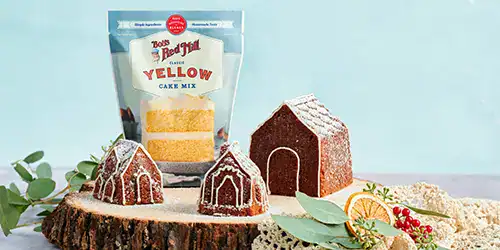
Gingerbread Cakelets
These gingerbread cakelets are delicious and easy to make! All you need is Bob’s yellow cake mix, a swirl of molasses and some cinnamon, nutmeg, ginger and clove.
Recipe by Liz Clements for Bob’s Red Mill Natural Foods
Makes: 1 Nordic Ware pan
Prep Time: 5 minutes
Bake Time: 30–35 minutes
Passive Time: 15 minutes
Gingerbread Cakelets
- 2 Tbsp Molasses
- 3 Eggs
- 1/3 cup Butter, melted
- 3/4 cup Milk or Water, room temperature
- 1 package Bob’s Red Mill® Classic Yellow Cake Mix
- 1 1/2 tsp ground Cinnamon
- >1 1/2 tsp ground Ginger
- 1/4 tsp ground Nutmeg
- 1/4 tsp ground Cloves
- Powdered Sugar, for dusting
Royal Icing
- 1 Egg White
- 2 cups Powdered Sugar, sifted
Gingerbread Cakelets
- Preheat oven to 350°F. In a medium bowl, whisk together molasses, eggs, melted butter and milk or water until smooth.
- Add cake mix and spices, whisking until evenly combined.
- Spray a cakelet pan with nonstick cooking spray. Divide batter among the prepared molds.
- Bake for 30–35 minutes, or until a cake tester inserted in the center comes out clean.
- Let cakelets cool in the pan for 15 minutes, then carefully unmold onto a wire rack.
- Once cool, trim the bottoms so the cakes are flat. Decorate with royal icing and dust with powdered sugar.
Royal Icing
- In a large bowl, whisk the egg white until slightly frothy.
- Gradually add sifted powdered sugar, whisking constantly until fully incorporated.
- Continue beating 5–7 minutes, until the icing is smooth, glossy and holds stiff peaks.
- If not using right away, cover tightly with plastic wrap pressed against the surface to prevent drying.
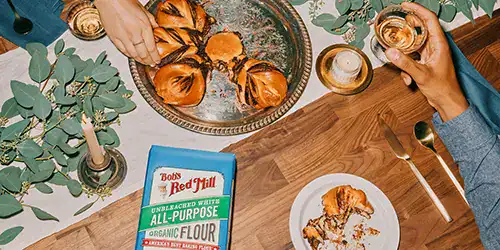
Pull-Apart Star Bread
Golden, fluffy and bursting with Hazelnut with Cocoa Spread and cinnamon sugar, this pull-apart bread may be made to share, but you’ll want it all to yourself!
Recipe by Liz Clements for Bob’s Red Mill Natural Foods
Makes: 1 star bread (about 8 servings)
Prep Time: 30 minutes
Bake Time: 20–30 minutes
Passive Time: 80–150 minutes
Dough
- 1 cup Warm Milk (about 110°F)
- 1 1/2 tsp Active Dry Yeast
- 5 Tbsp Unsalted Butter, melted
- 1/4 cup Sugar (50 g)
- 1 Egg
- 3 3/4 cups (450 g) Bob’s Red Mill® Organic Unbleached White All-Purpose Flour, plus more for shaping
- 1 tsp Salt
Filling
- 1/2 cup Hazelnut with Cocoa Spread
- Cinnamon Sugar (1/4 cup Sugar + 1 Tbsp ground Cinnamon)
To Finish
- Egg Wash (1 Egg + 2 tsp Water, beaten)
- Powdered Sugar, for dusting
Dough
- In the bowl of a stand mixer, stir together warm milk and yeast. Let sit until foamy, about 5 minutes. Add melted butter, sugar and egg. Add flour and salt.
- Using the dough hook, mix on low until a soft dough forms. Increase to medium low and knead until smooth and elastic, 8–10 minutes. (Dough should pull away from the sides of the bowl).
- Shape into a ball, place in a lightly oiled bowl, cover and let rise until doubled, 1–2 hours. (Alternatively, let the dough rise in the fridge overnight and shape the following day, following the steps below.)
Filling
- Mix sugar and cinnamon in a small bowl and set aside.
- Once the dough has risen, punch down the dough and place on a lightly floured surface. Divide into four equal pieces and shape each into a ball. Roll each ball into a thin, roughly 12-inch circle.
- Spread Hazelnut with Cocoa Spread on 3 of the circles, leaving a 1-inch border. Sprinkle about 2 teaspoons cinnamon sugar over each Hazelnut with Cocoa layer. On a piece of parchment paper, stack the three Hazelnut with Cocoa Spread rounds on top of each other, creating alternating layers of dough/filling. Place the final plain dough circle on top. Trim edges to create an even 10–11-inch circle.
- Lightly press a 2 ½–3-inch round cutter in the center of the dough to create a shallow indentation, then remove it. Mark lines on the dough radiating outward from the edge of the indented circle, first dividing the circle into four quarters. Divide each quarter in half, then each of those sections in half again, creating 16 even sections. Using a sharp knife or pizza wheel, cut along the marked lines, stopping at the indentation so the center remains intact. Keep the dough on the parchment and transfer it to a sheet tray.
- Working on the sheet tray, take two adjacent strips and twist them away from each other three times, then pinch the ends together. Repeat with all strips to form an eight-pointed star.
- Loosely cover and let rise until puffed, 20–30 minutes. Meanwhile, preheat oven to 350°F.
- Brush with egg wash and bake 20–30 minutes, until golden brown. Cool slightly and transfer to a platter or cutting board. Dust with powdered sugar just before serving.
SHOP
